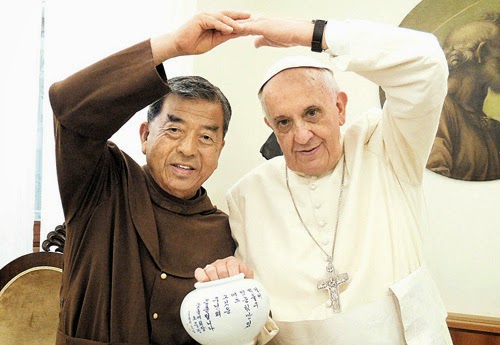Cae La Bomba – With Madrid and Valencia, Francis Plays "Spanish Roulette"
His name only surfaced for the post in recent days, the succession to the retiring Cardinal Antonio Maria Rouco Varela, 78, had been long and widely thought to be destined for the prefect of the Congregation for Divine Worship, Cardinal Antonio Cañizares Llovera. Instead, the 68 year-old theologian – known as El Ratzingerino (the "Little Ratzinger") for his close ties to Benedict XVI – has been dispatched to succeed Osoro in Valencia, Spain's second-largest local church, which likewise happens to be his hometown.
No new prefect of CDW was named alongside Cañizares' transfer. As the handovers of the Curia's top posts are traditionally arranged with no small amount of detail, it is exceedingly rare for a congregation's top office to be vacant for any reason other than the occupant's death.
Notably, the year of buzz over the cardinal's future at CDW was able to continue as Cañizares had been the lone head of a Roman congregation who Francis did not reconfirm in office following his election. As the Pope reaches the year-and-a-half mark since his election on 13 September, it bears recalling that several other dicastery chiefs remain in a similar limbo, among them the prefect of the Apostolic Signatura, the Wisconsin-born Cardinal Raymond Burke.
After almost years eight years at the helm of the office overseeing the global church's liturgical life, Cañizares' (above) swan-song came in a July letter which concluded a years-long consultation aimed at avoiding "abuses" in the Sign of Peace at Mass.
Having preached the Spanish episcopate's 2006 retreat and sharing his native language with the group, the relative surprise of today's double move serves to further underscore Francis' determination to be his own man where he's sufficiently appraised on a given situation. What's more, however, given Osoro's lengthy background in pastoral work and adult education before going on to lead three dioceses, the Madrid pick – an ecclesial moderate said to have an "unequaled capacity for work," and reportedly dubbed "The Pilgrim" by Francis thanks to his zest for the trenches of ecclesial life – was apparently deemed a more optimal fit for the role of this Pope's de facto "face" of Spanish Catholicism in the wake of Rouco's oft-combative two-decade tenure.
As archbishop of Madrid, Osoro is all but certain to become a cardinal at the next consistory, all the more as no Spanish elector was elevated by Papa Bergoglio at last February's intake. Despite having merely 350,000 fewer Catholics than Madrid, meanwhile, the five-century old Valencia seat only received its first red hat in 2007, when Osoro's predecessor Agustín García-Gasco was given the scarlet by B16; García retired 15 months later.
At the now Pope-emeritus' first consistory in 2006, Cañizares was elevated to the College as archbishop of Toledo – as Spain's eldest diocese, the country's primatial see – which has a Catholic population of just 650,000. While Toledo has routinely been the seat of a Spanish cardinal alongside Madrid and Barcelona, at least to date, his successor there, 70 year-old Braulio Rodriguez, has not been called to follow suit.
In another unusual aspect to the shuffle, with today's moves both Osoro and Cañizares have been tapped to lead their third archdiocese.
Beyond Madrid, another key opening in the Spanish-speaking world has been pending for some time and is likewise expected to be filled in short order: Havana, where Cardinal Jaime Ortega y Alamino turns 78 in October. As Ortega has been assailed by hard-liners for employing a diplomatic approach over his two-decade tenure which has yielded limited freedoms for the church by Cuba's Communist regime, the appointment of his successor will be interpreted as setting Francis' intended course for the Catholic response to the island's fraught political situation.
-30-















